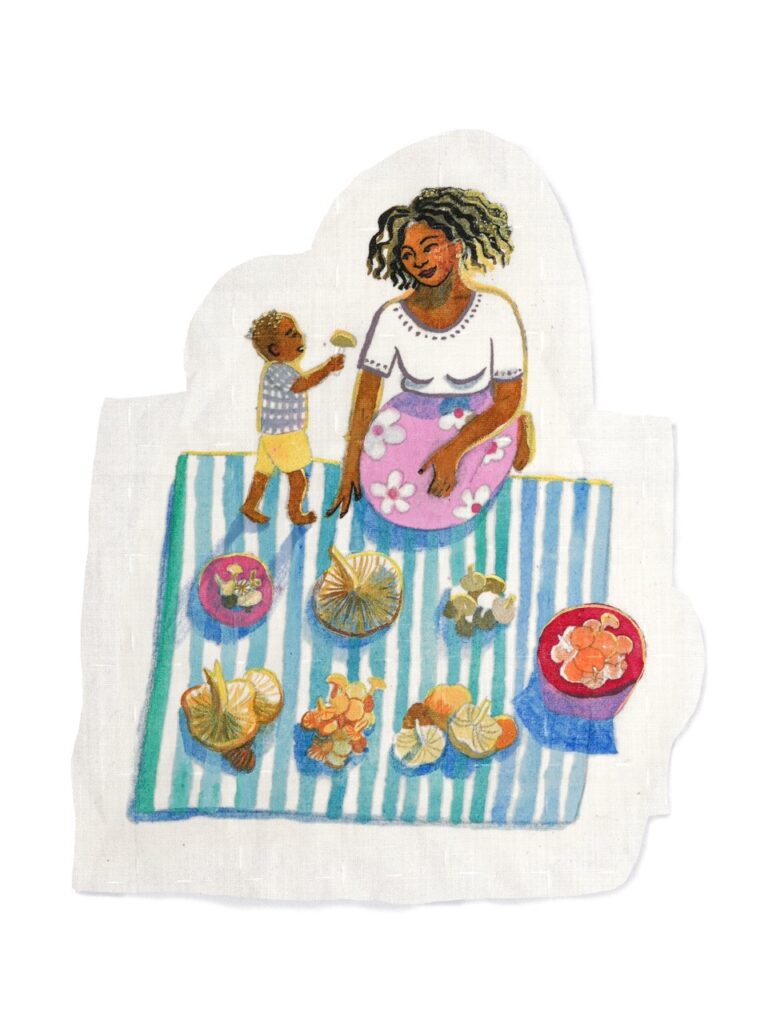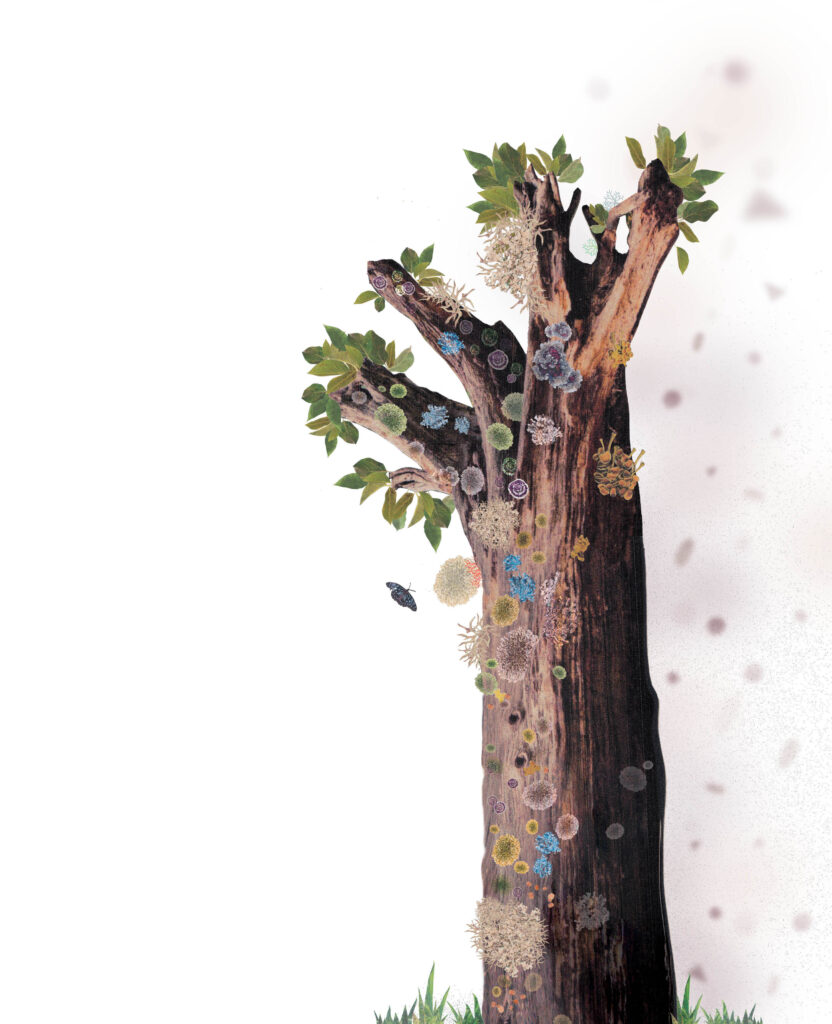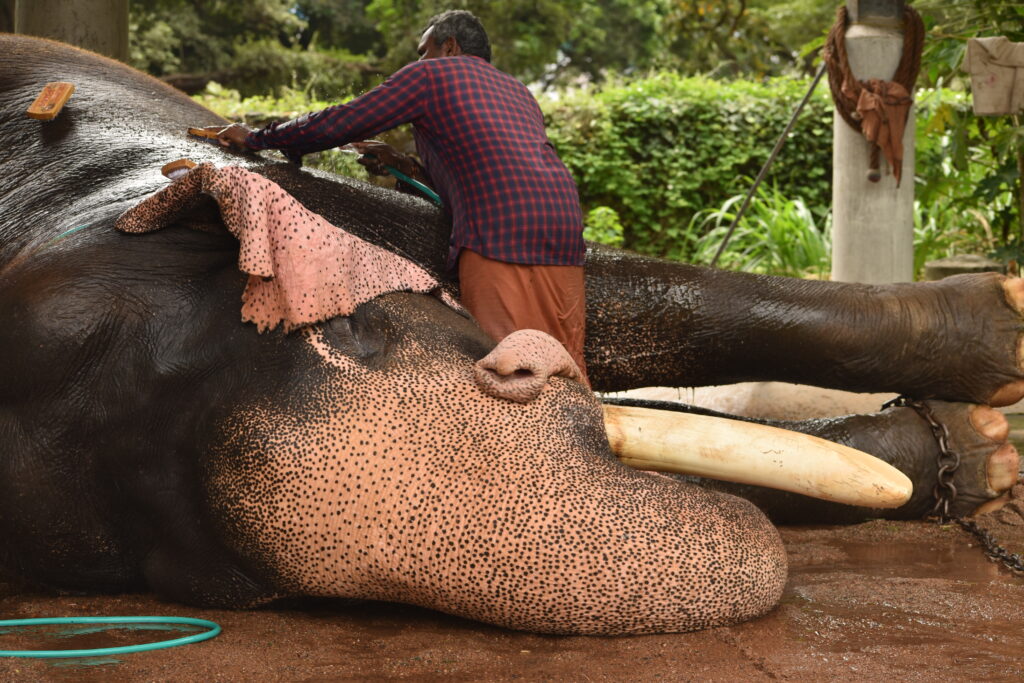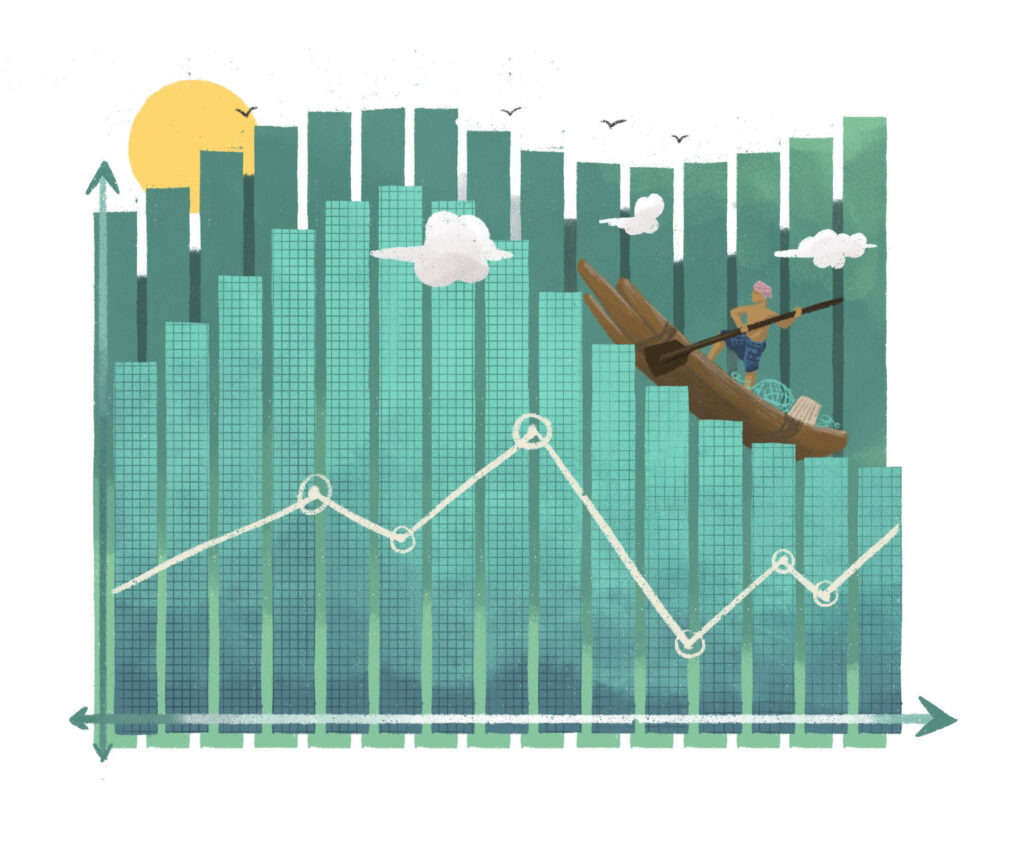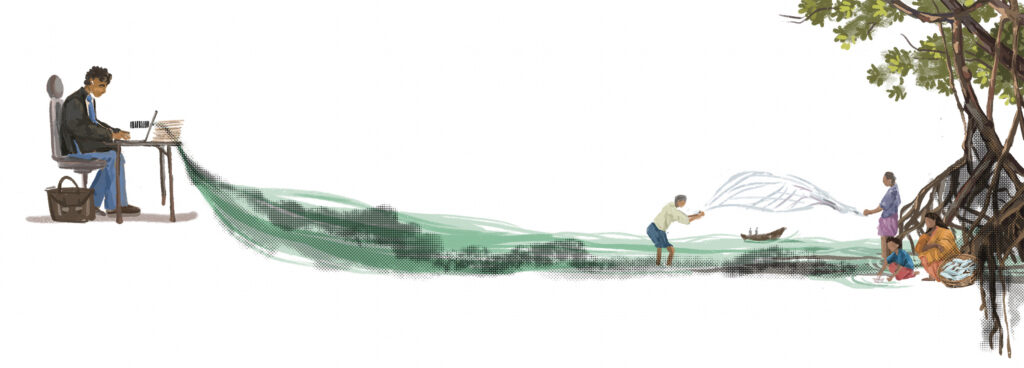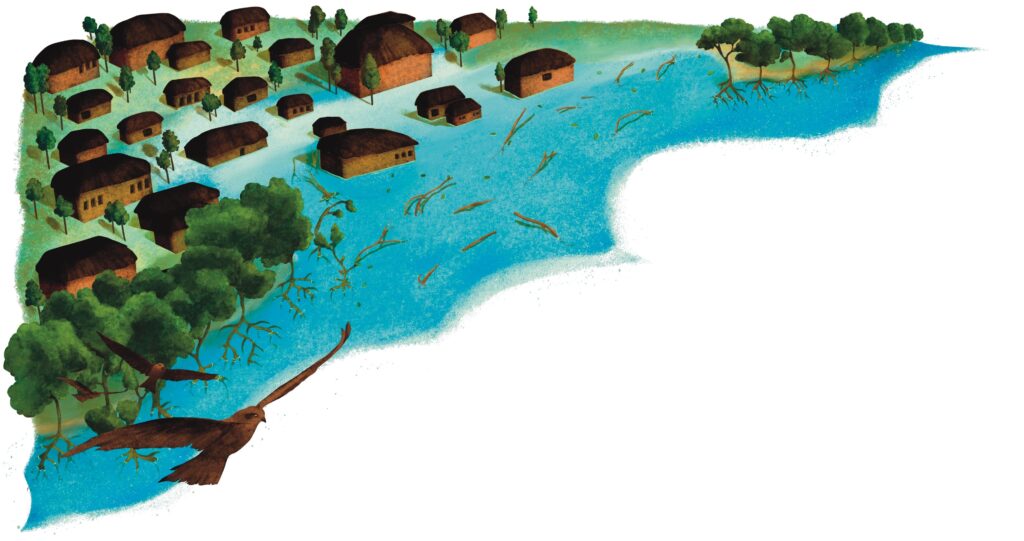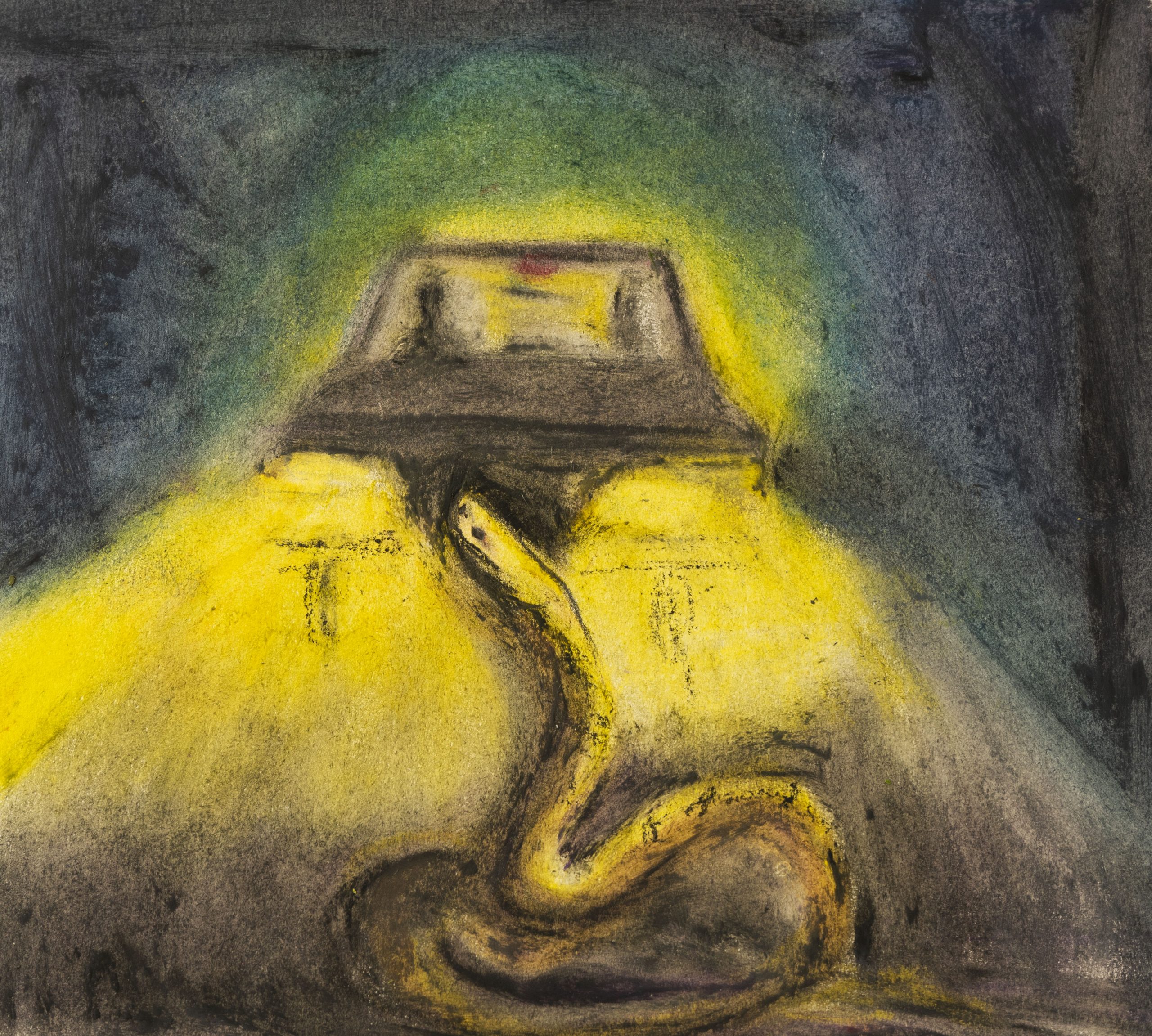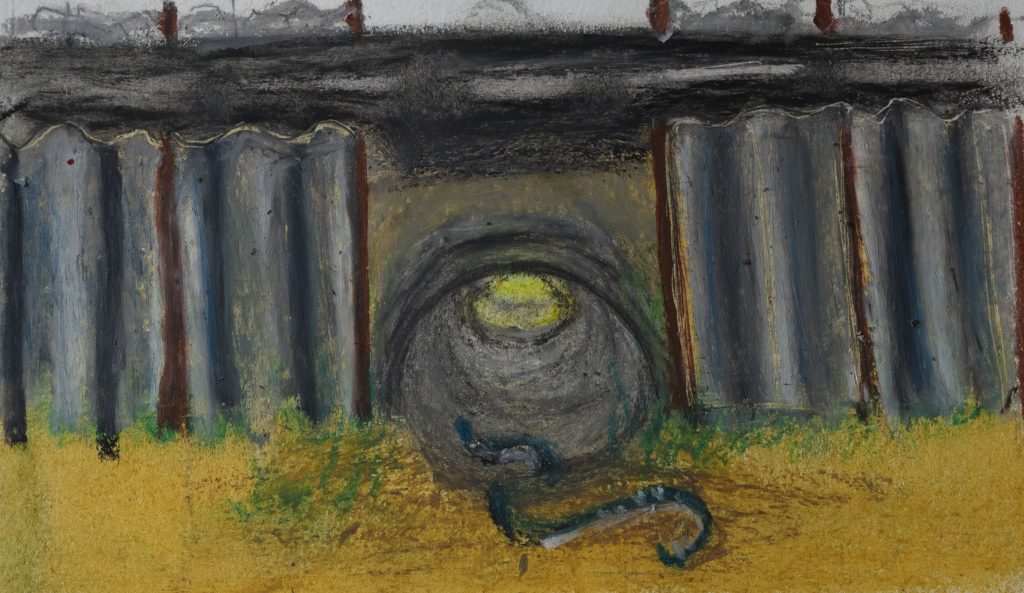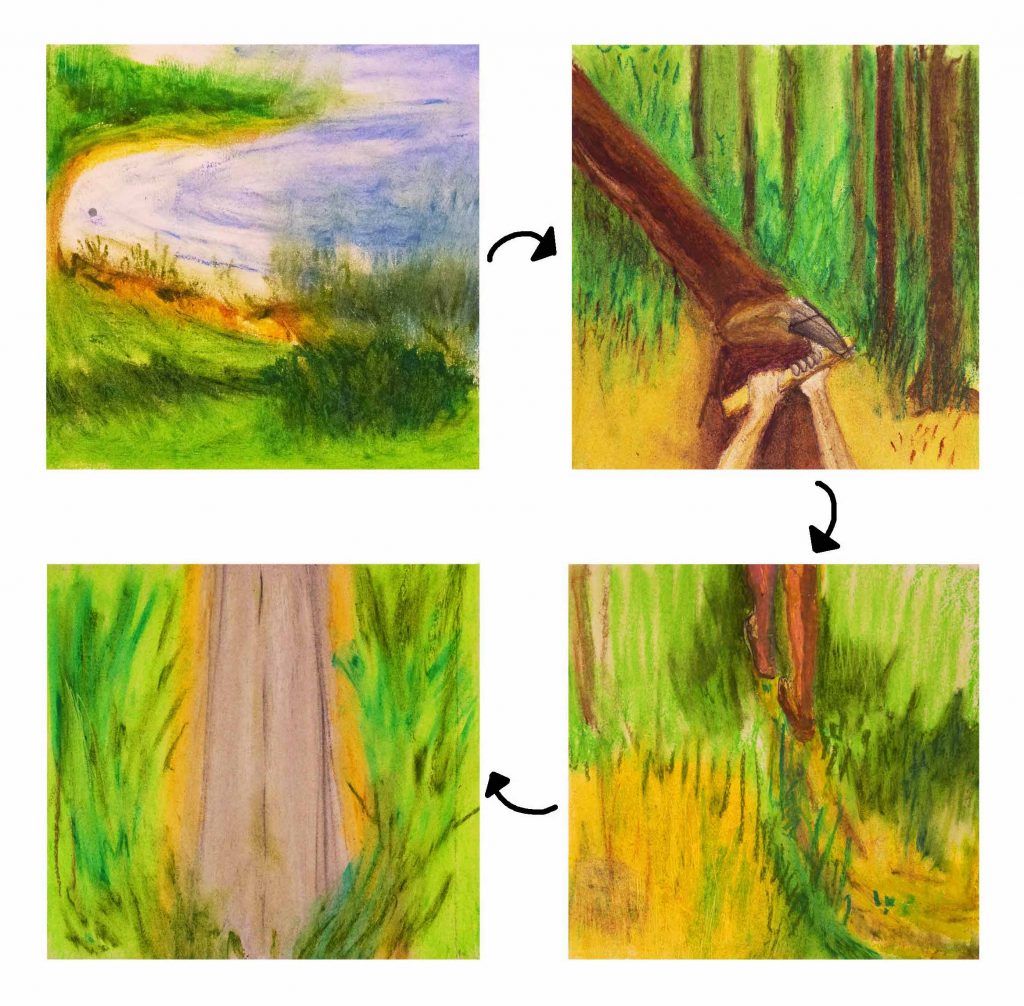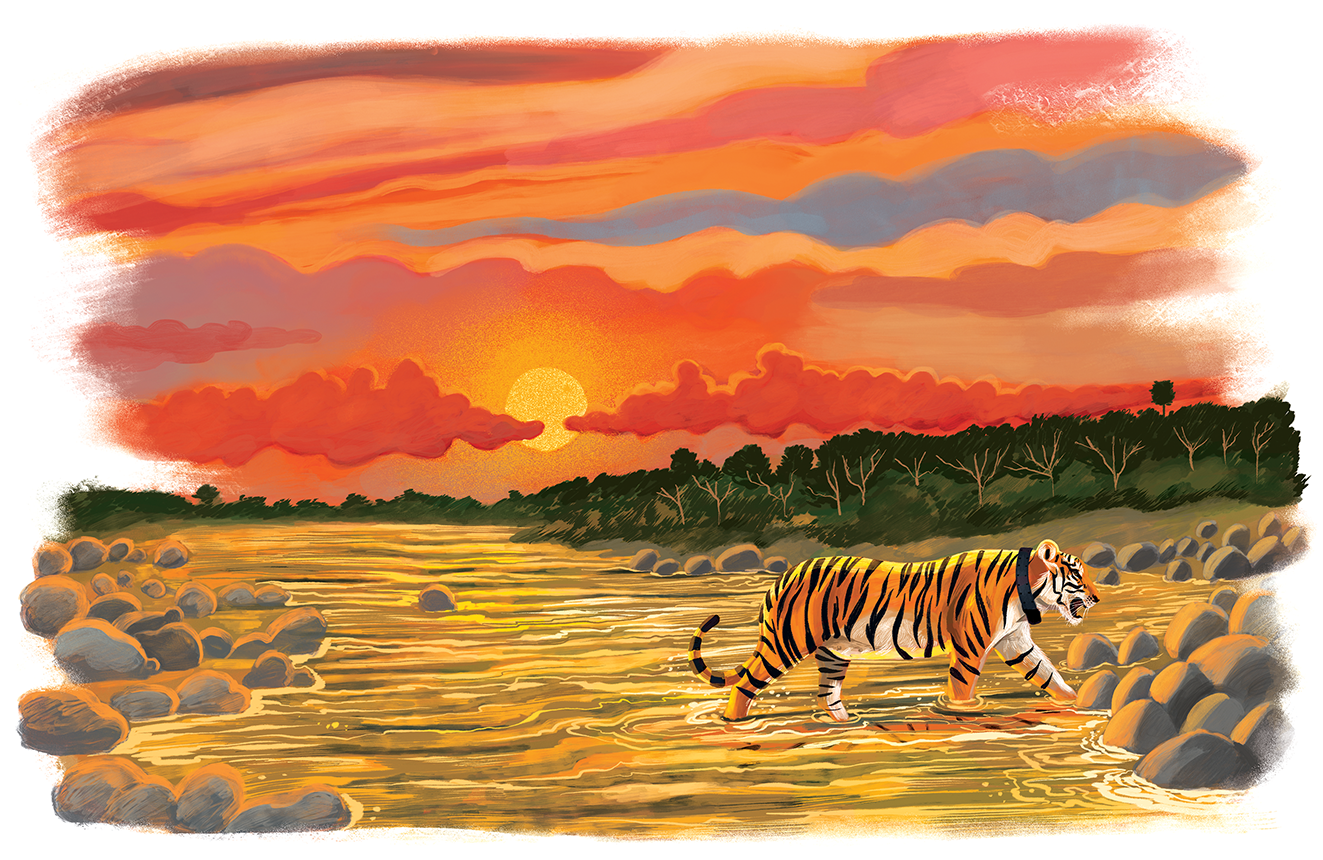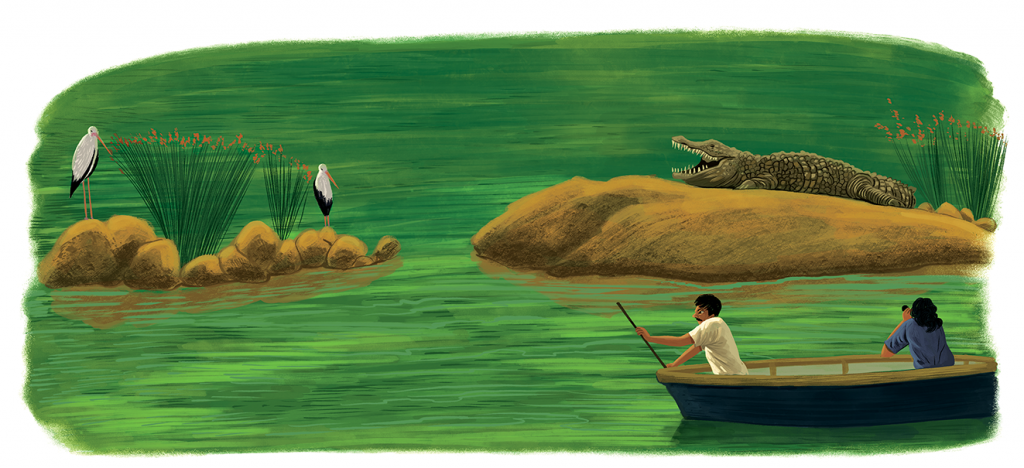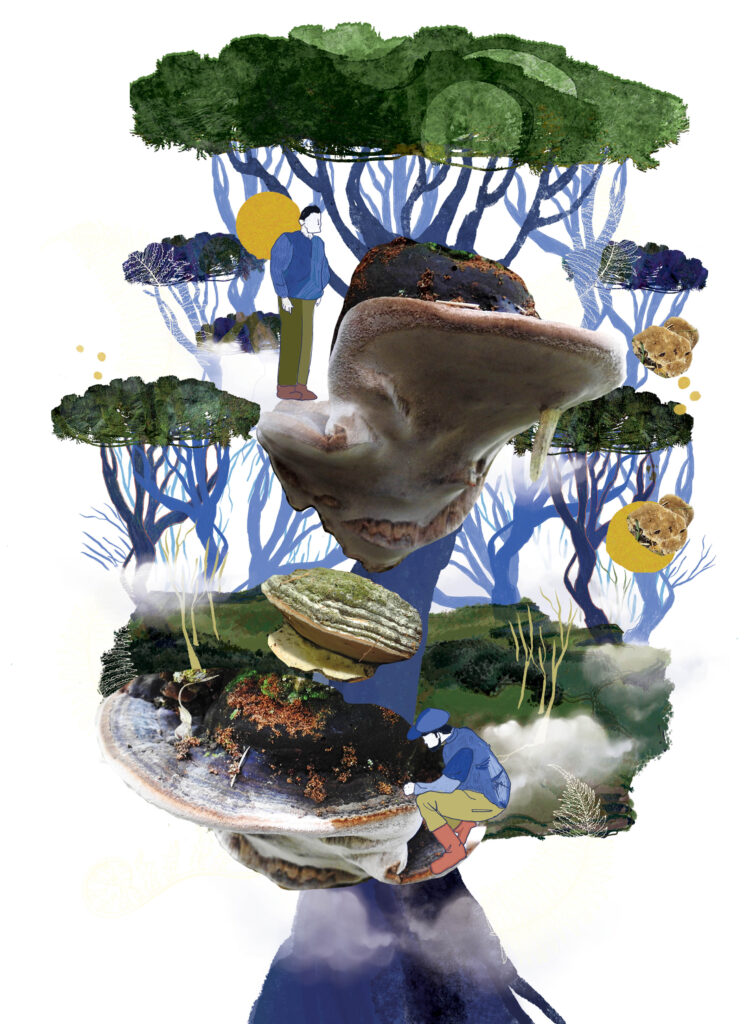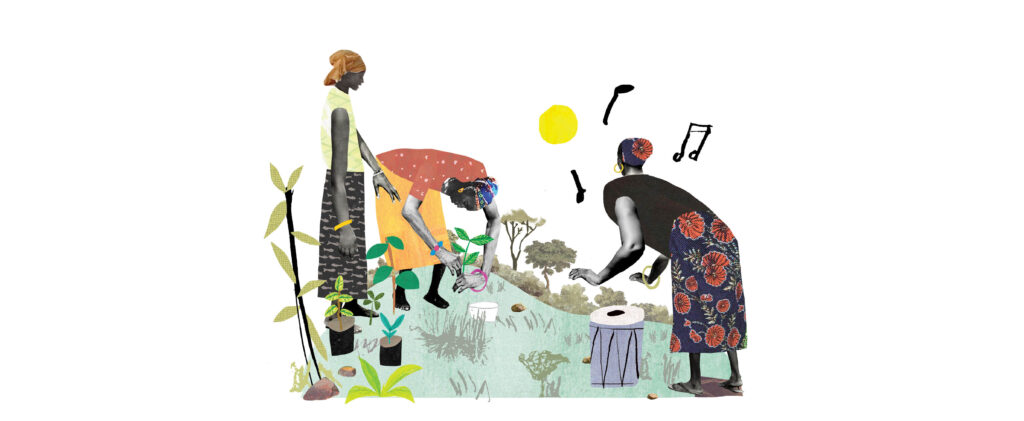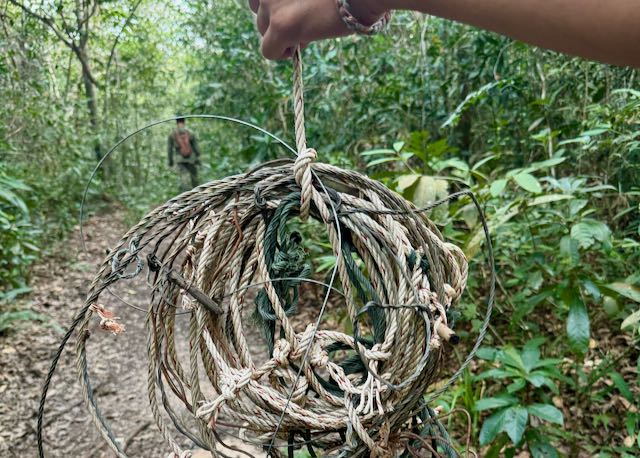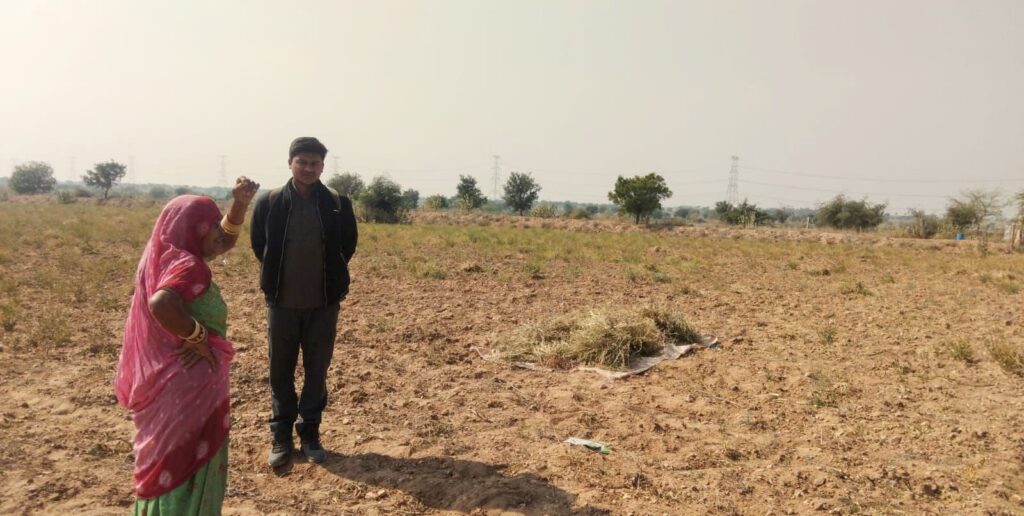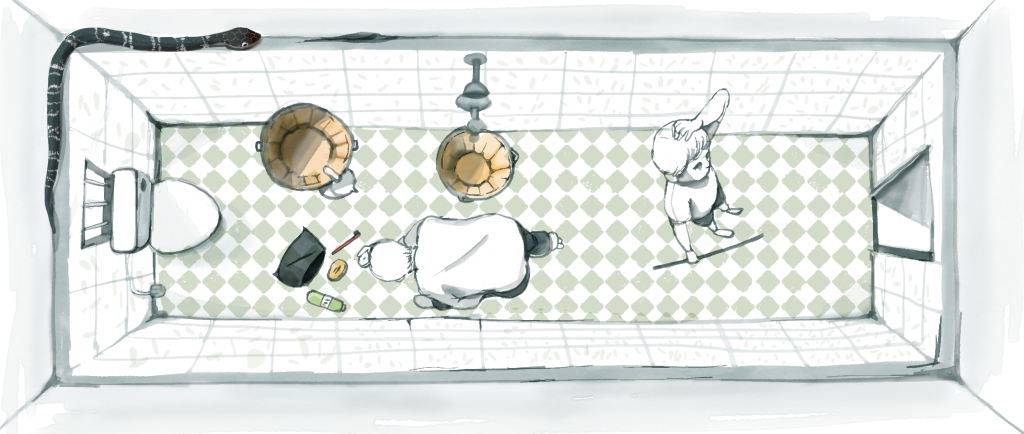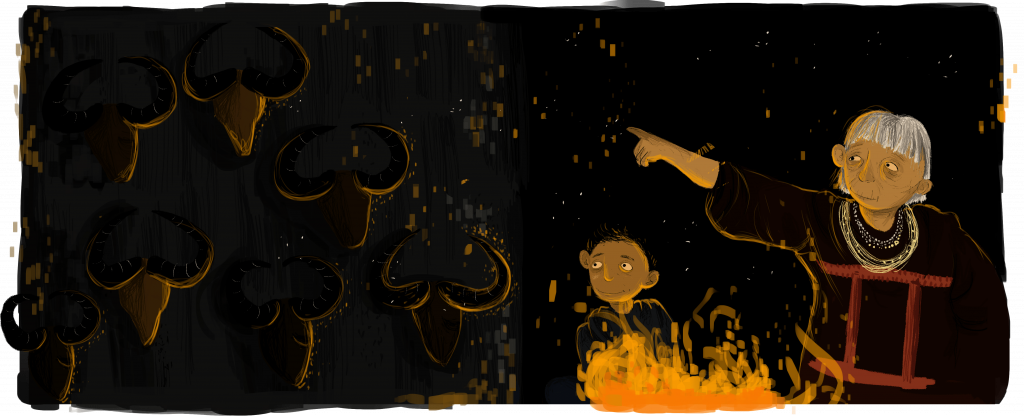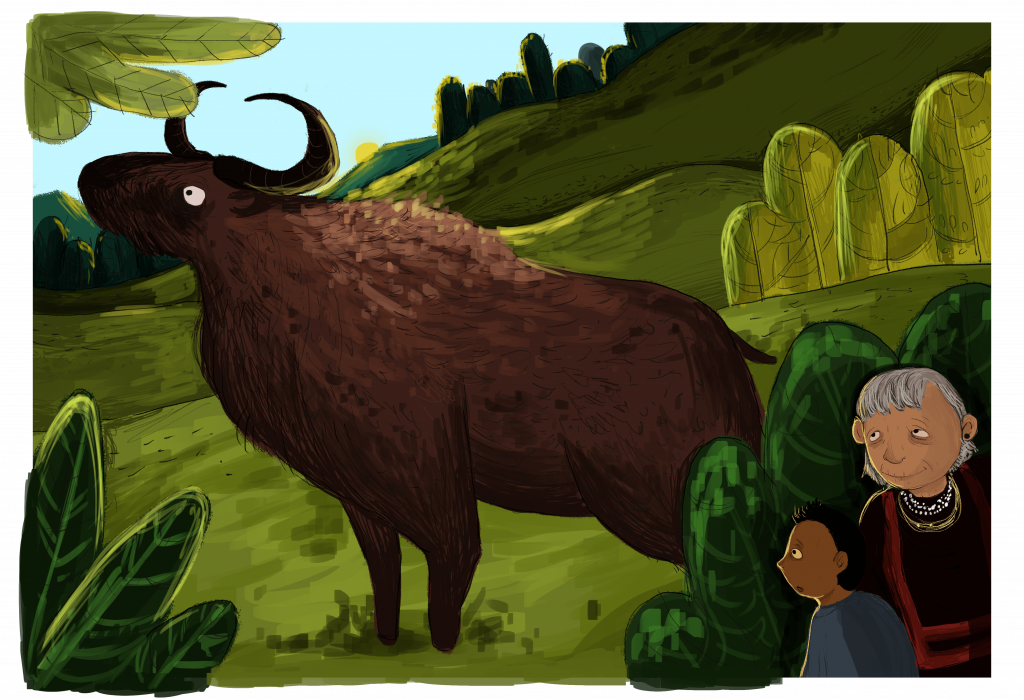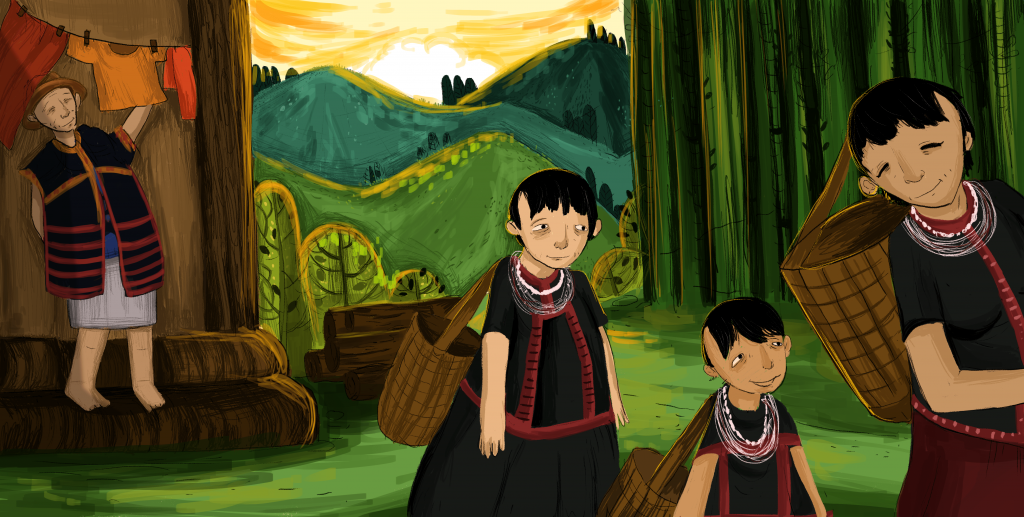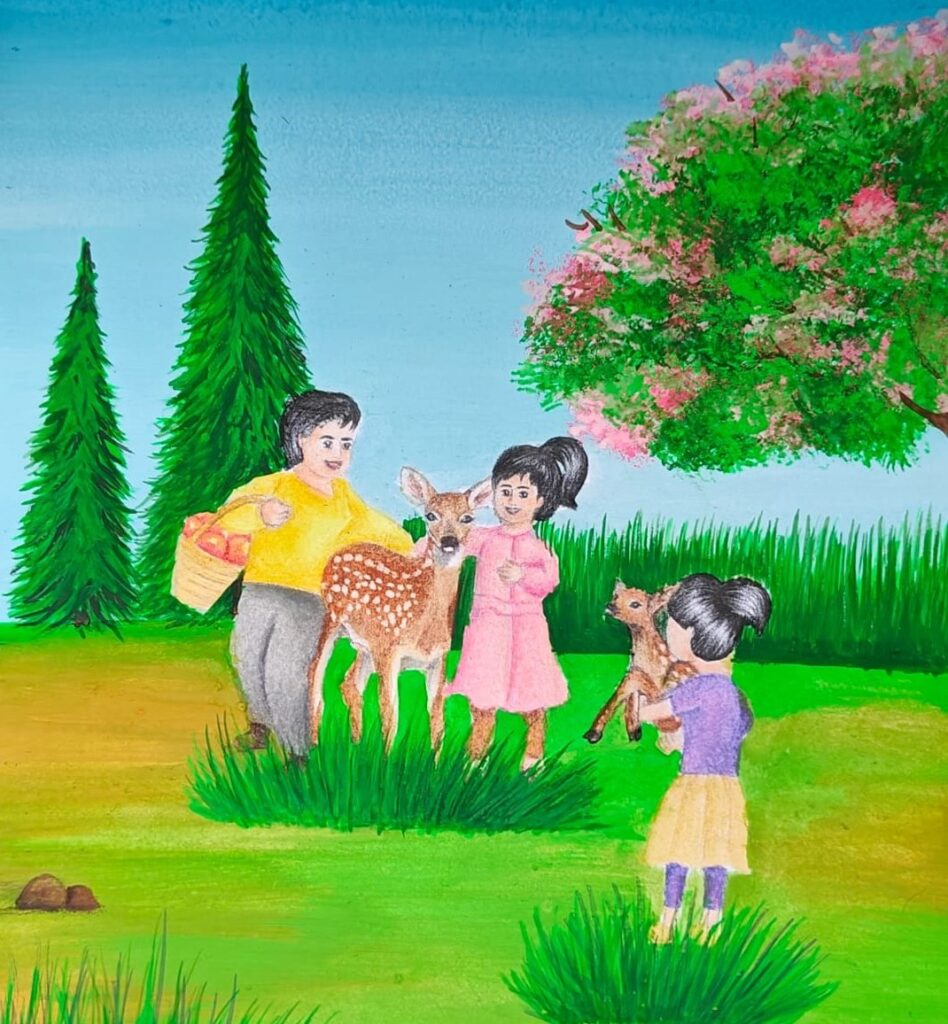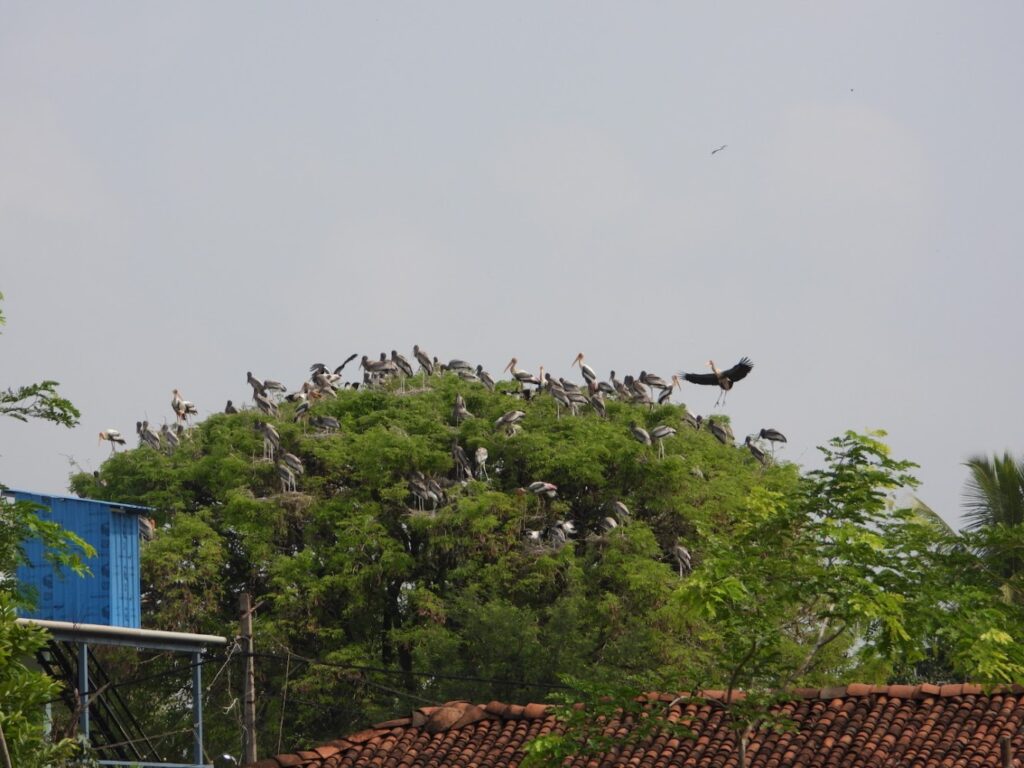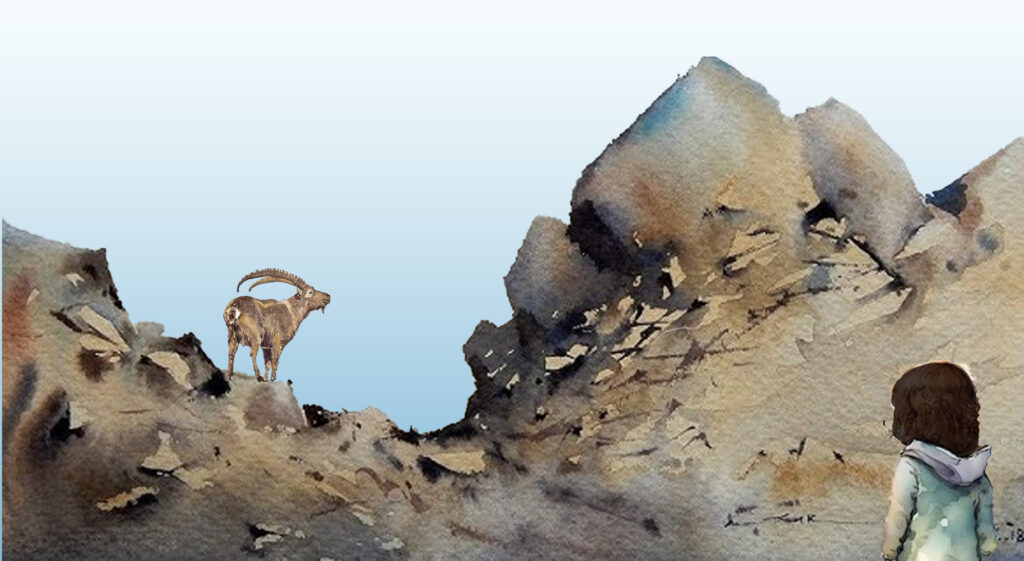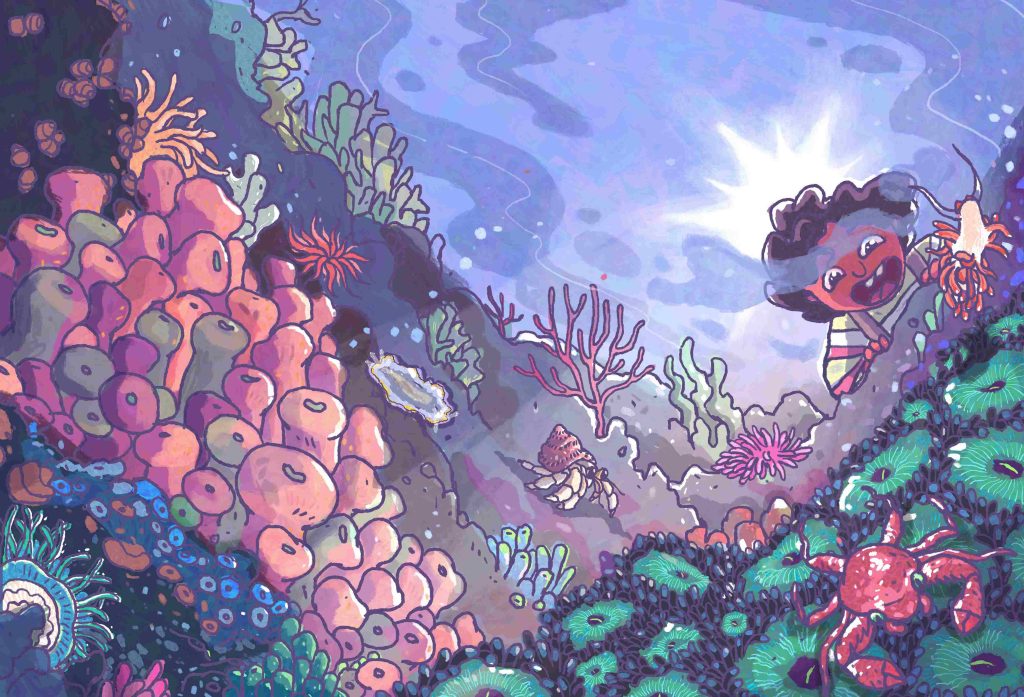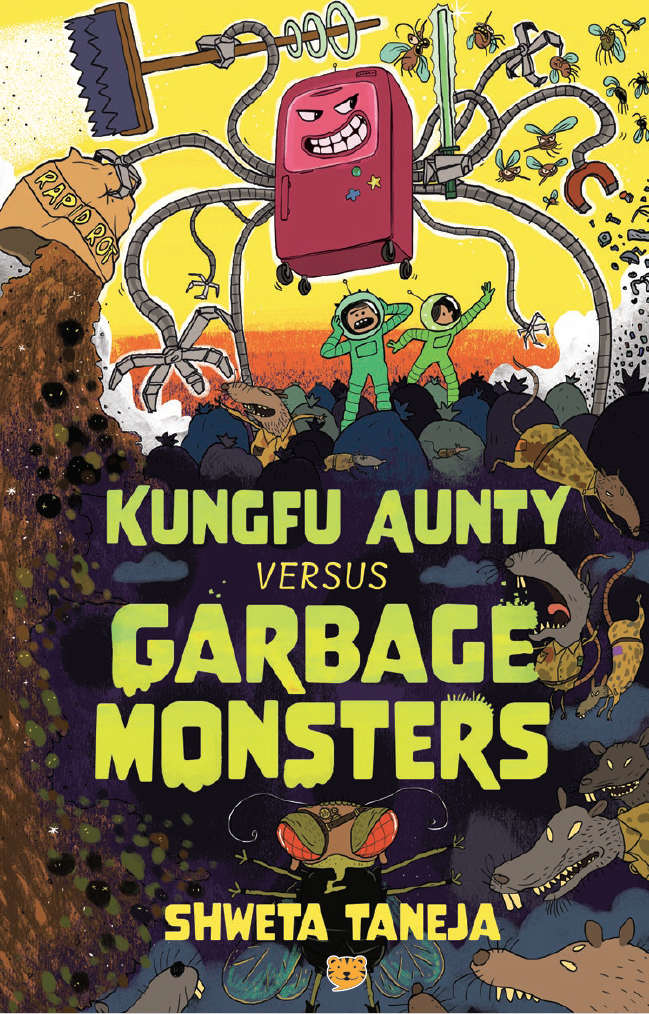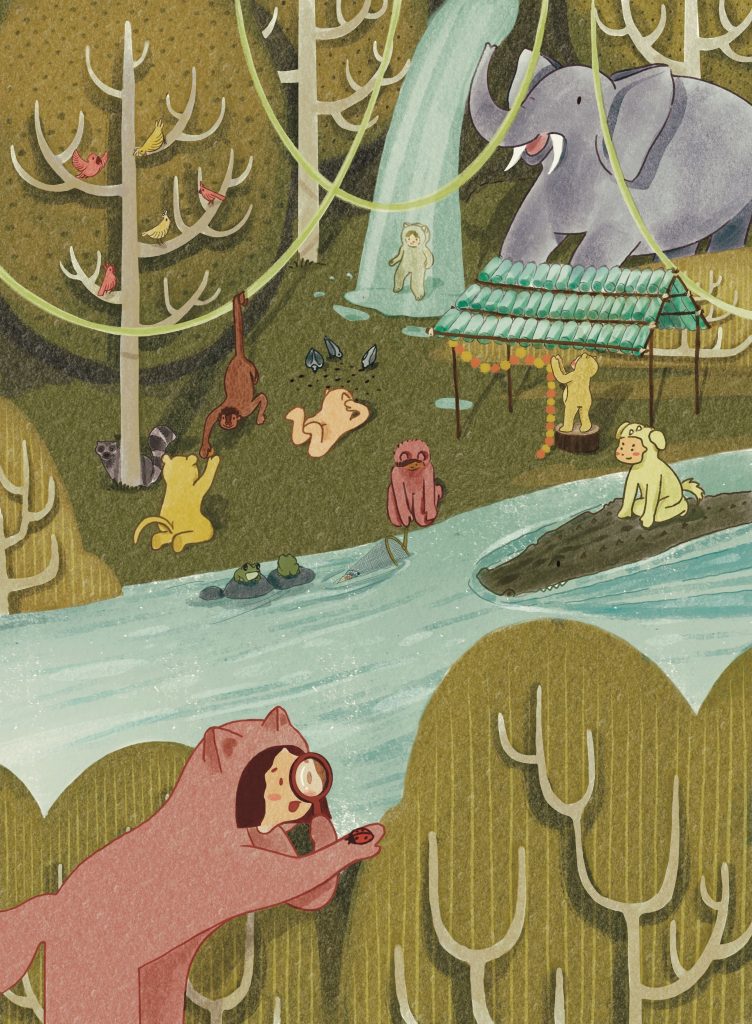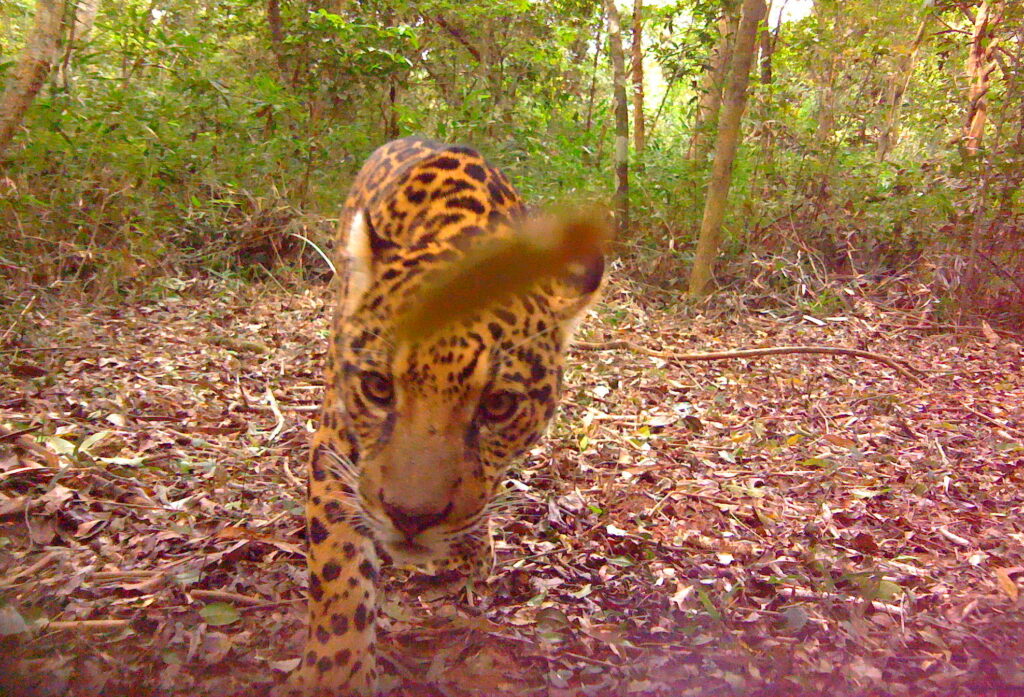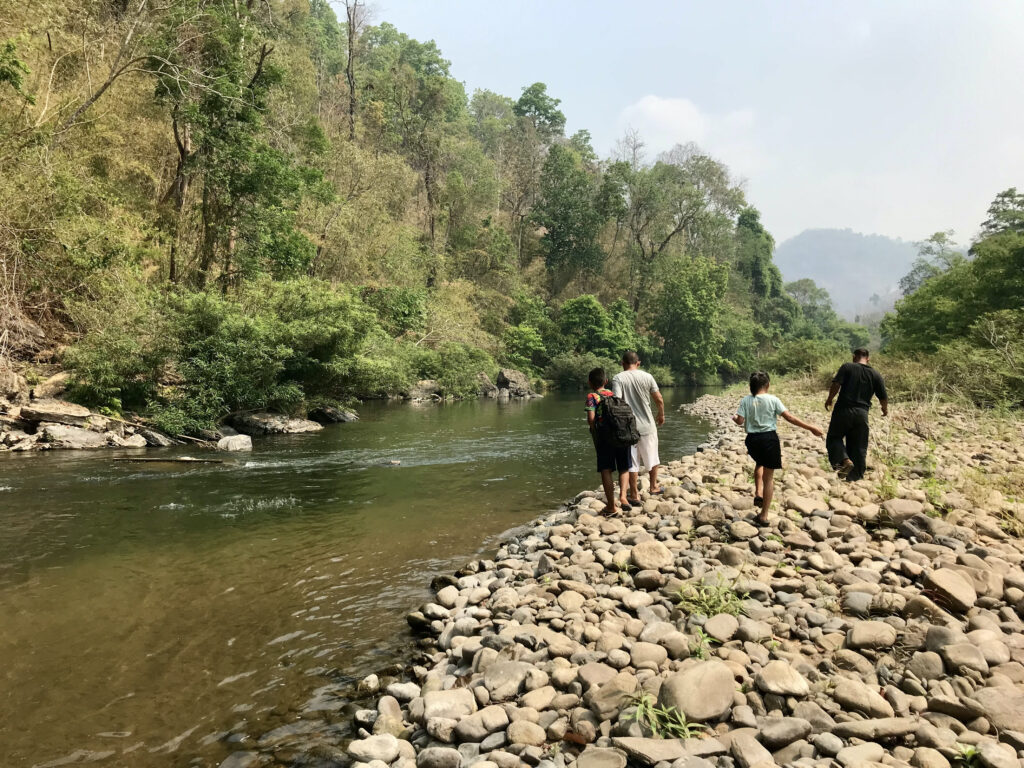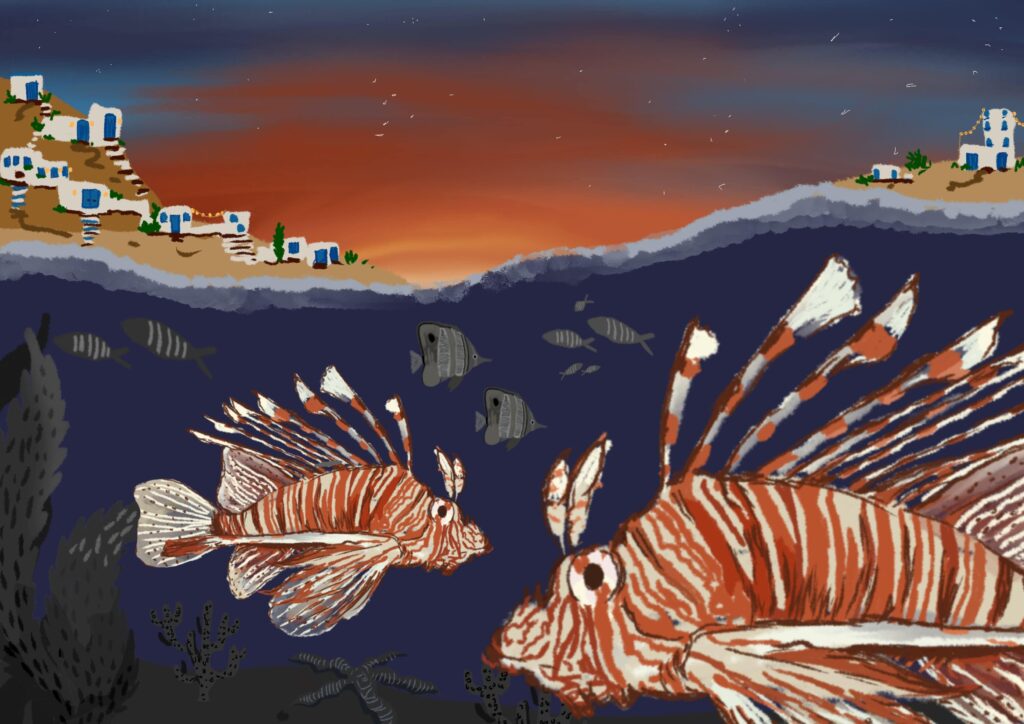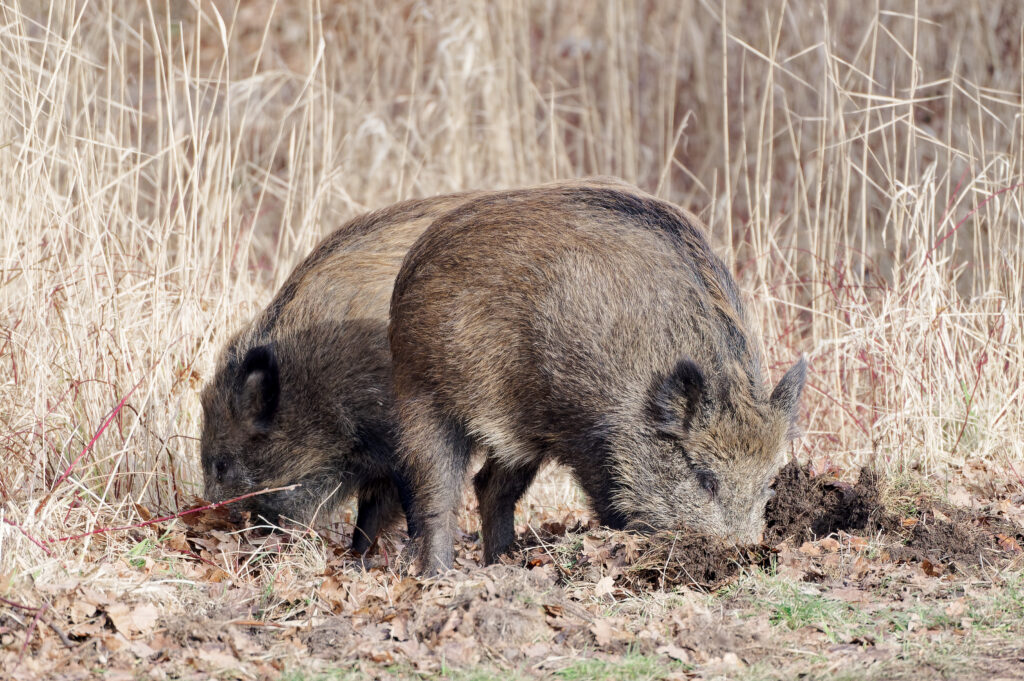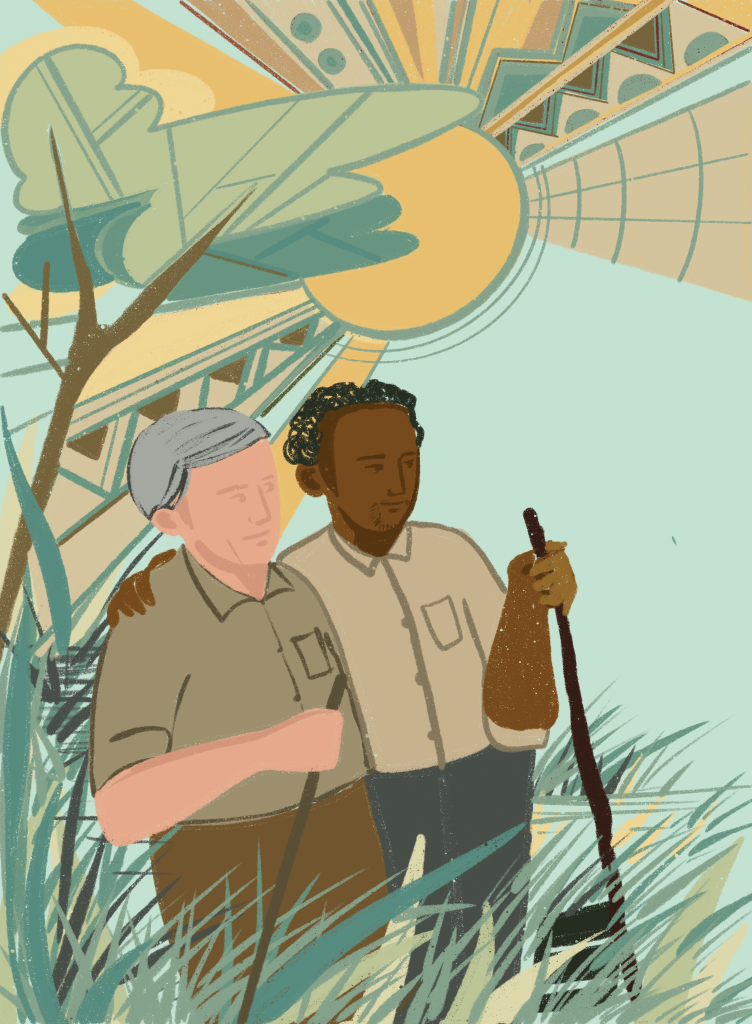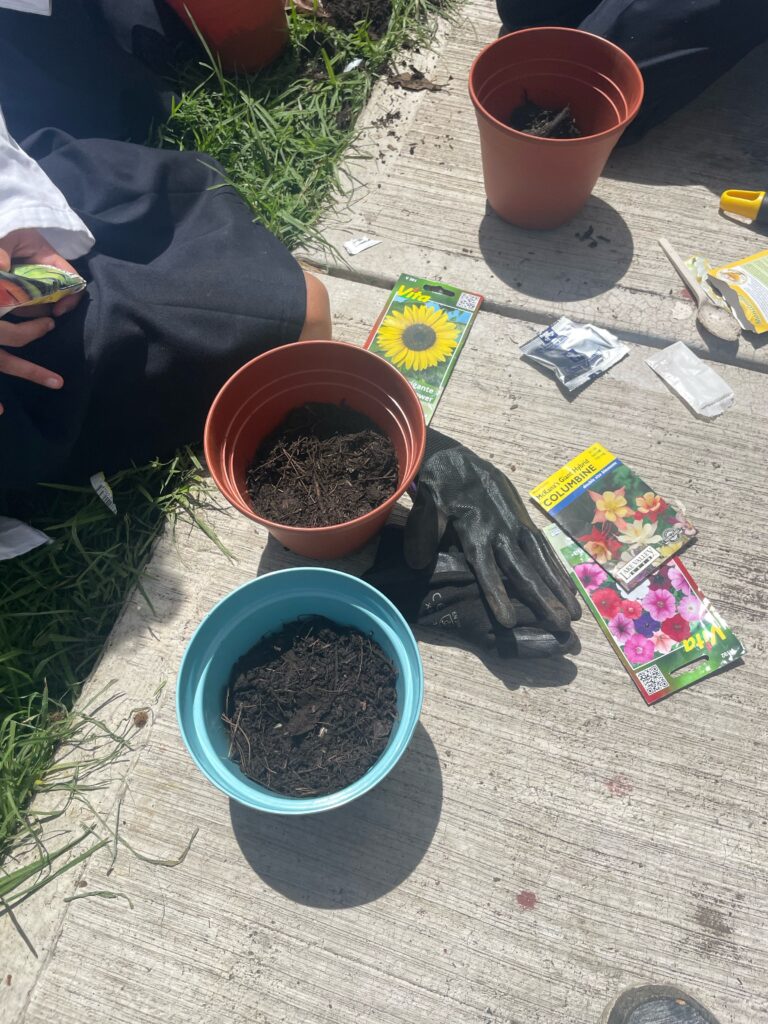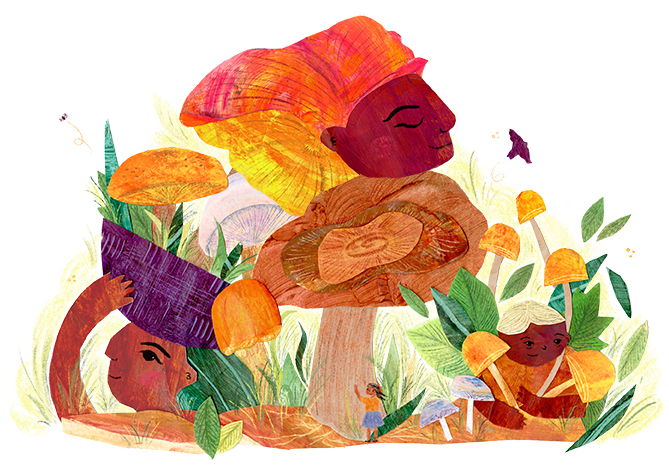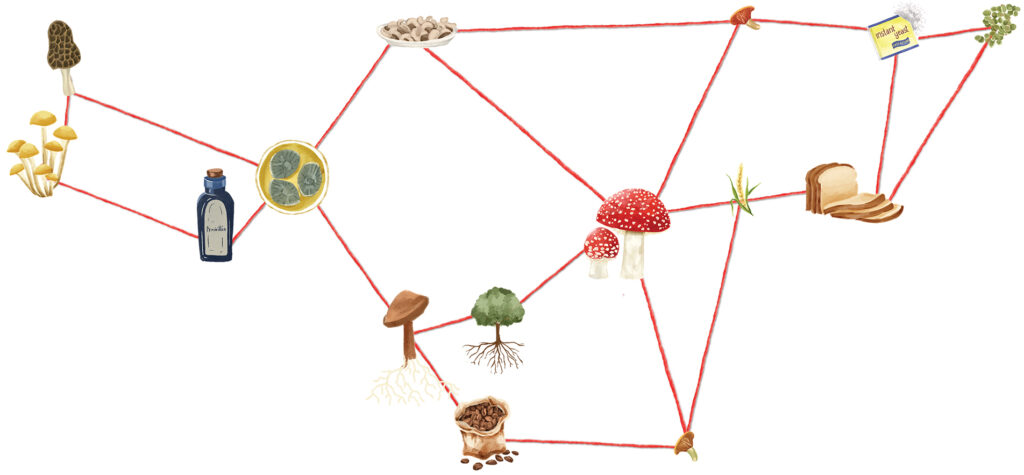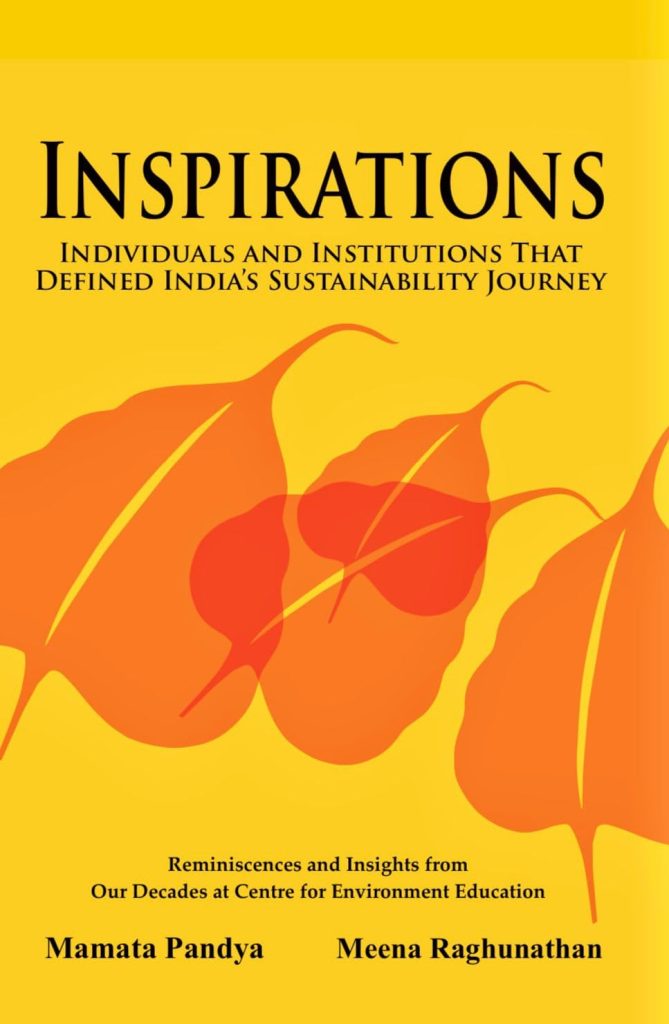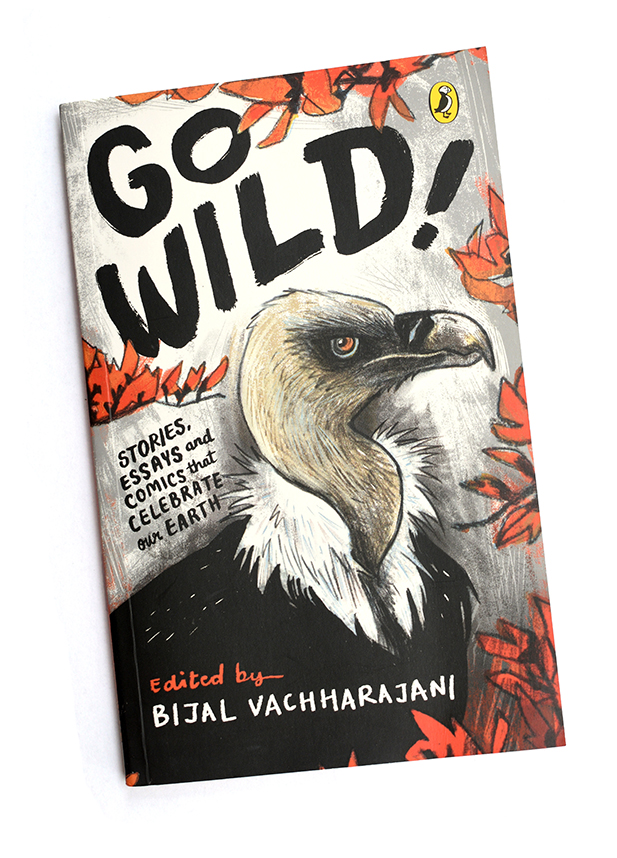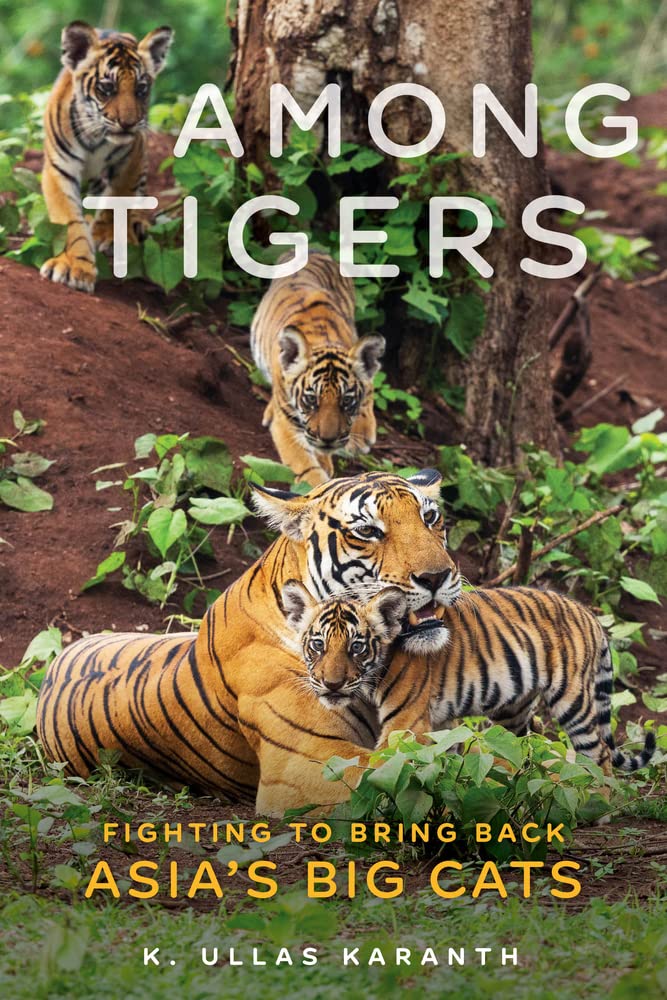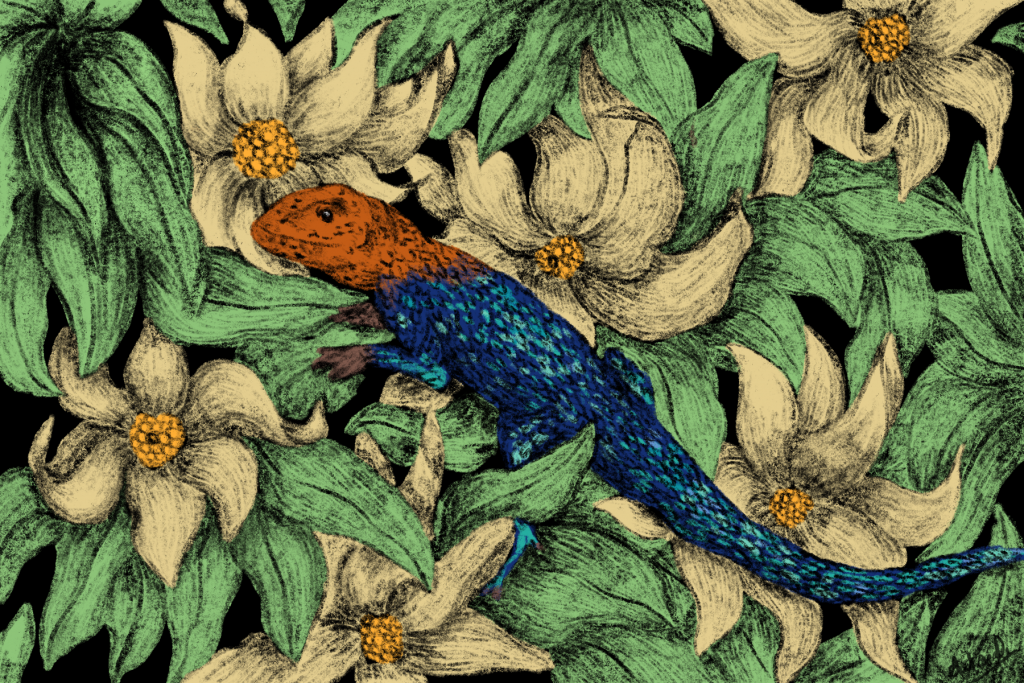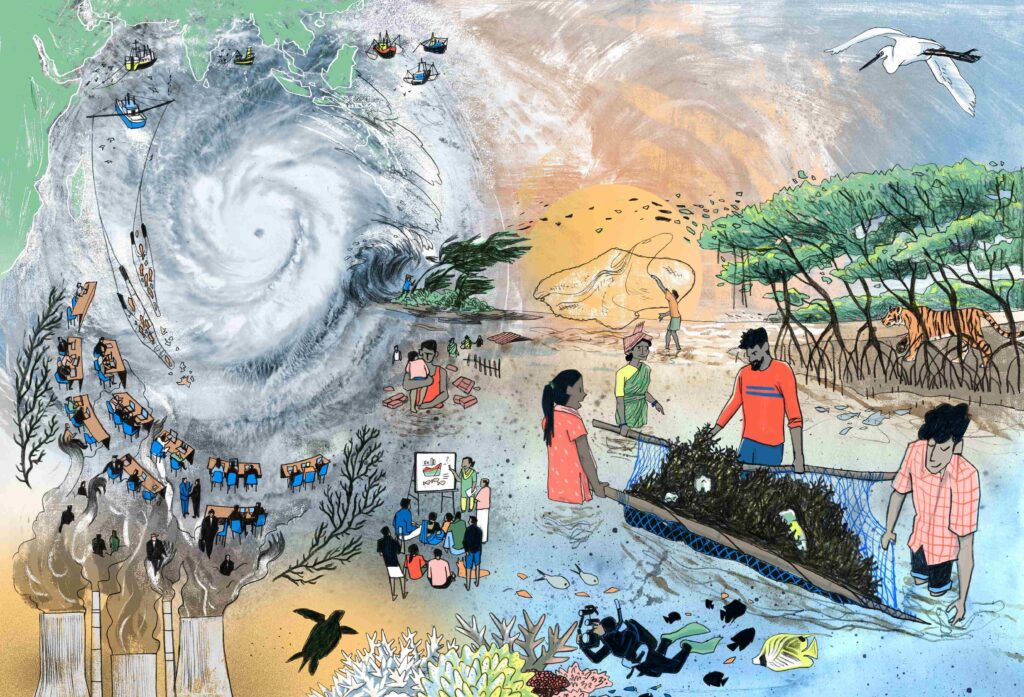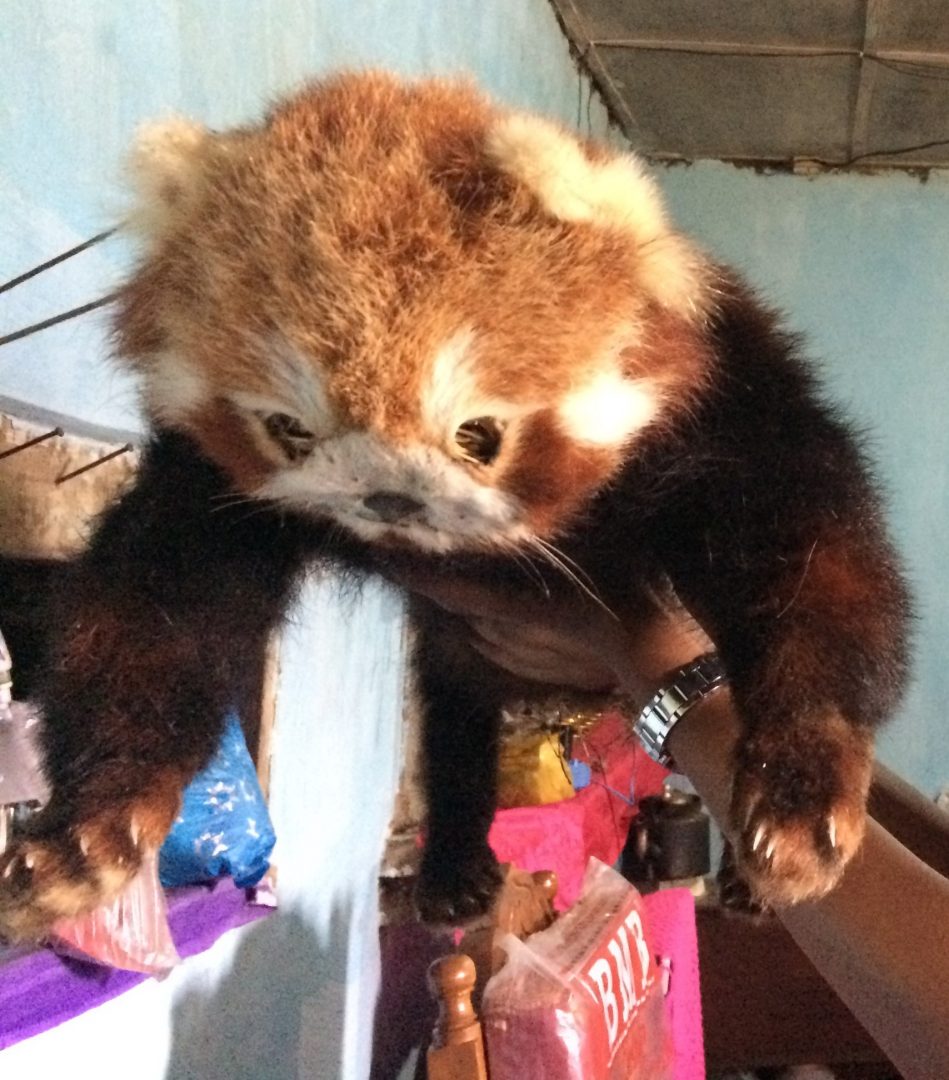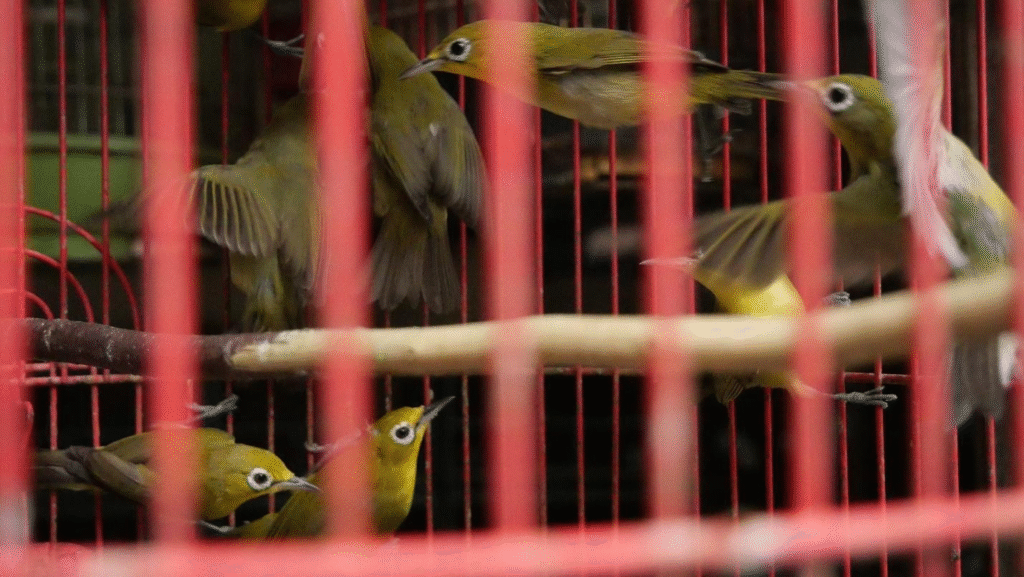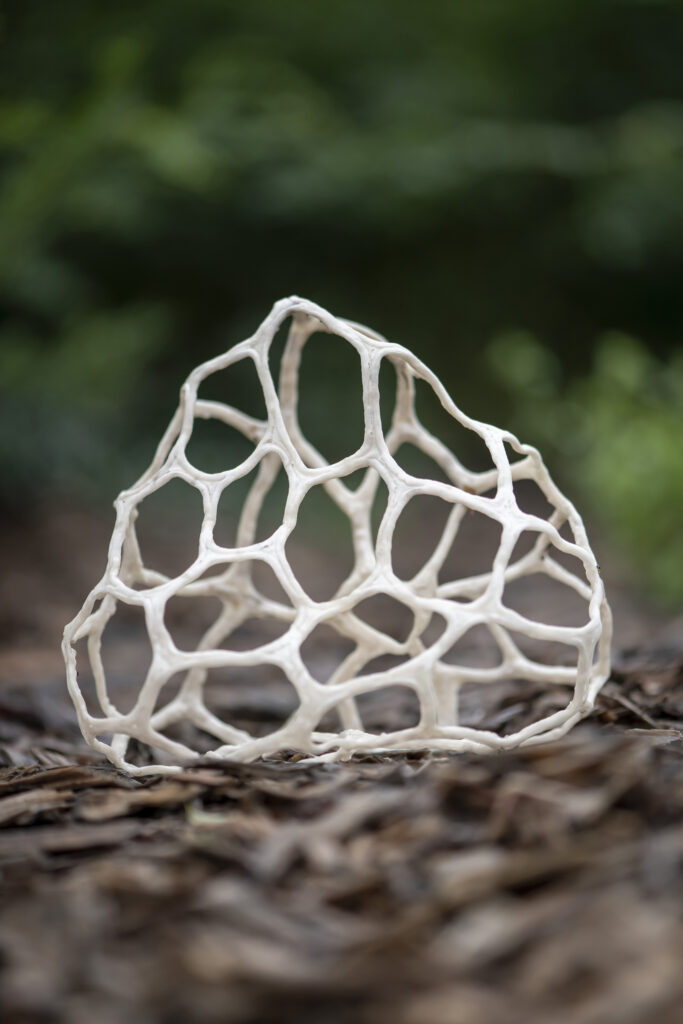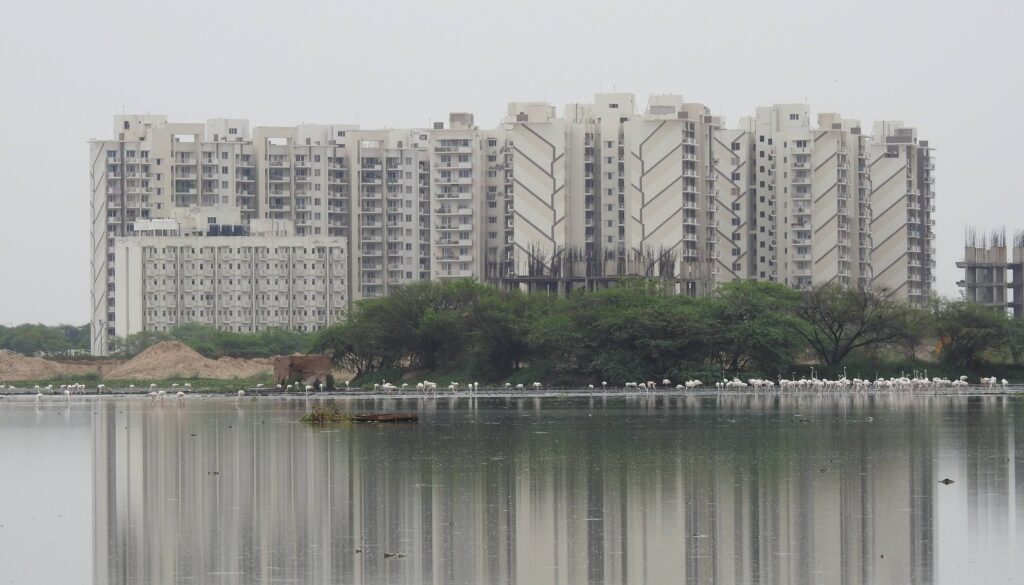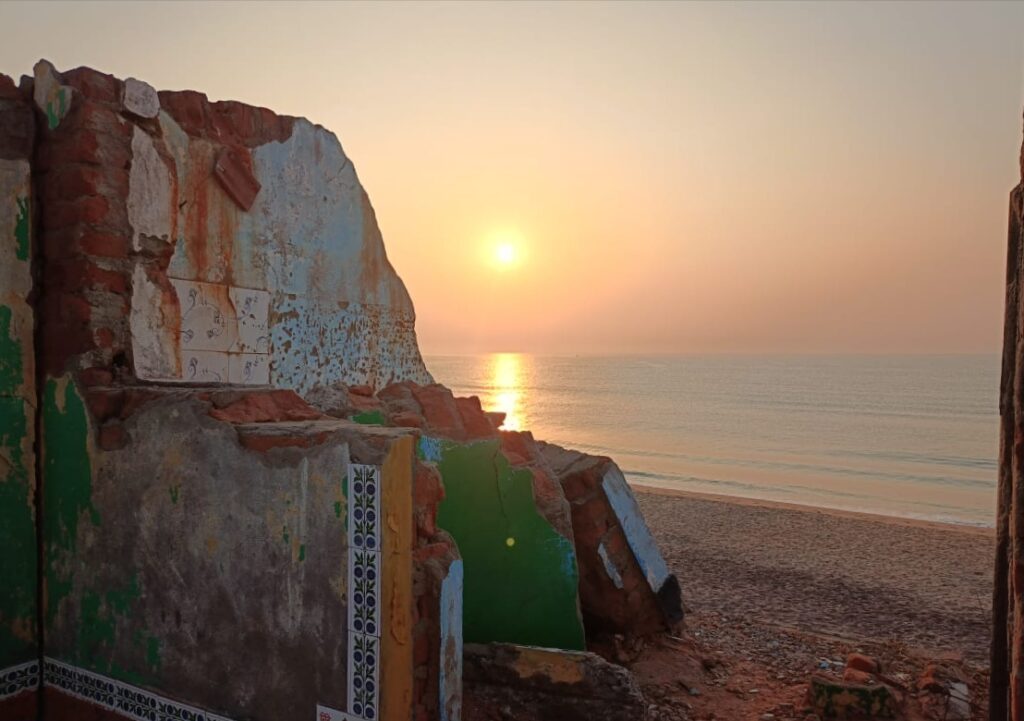The winter moon, a waxing gibbous, has risen early. On an ancient mango tree on the edge of the paddyland sits a crested hawk-eagle. The last of the bee-eaters dive for one more meal above the ripening paddy. A red-wattled lapwing is pestering a straggly group of unconcerned cattle egrets in a fallow field. In a shadowy stretch of the stream that flows through the paddy field, a small blue kingfisher sketches a sapphire streak. It’s the time of the year when wild berries ripen on thorny bushes, scandents and climbers on the stream bank. The pale pink ones of panal (Glycosmis pentaphylla), the small shiny black thodali (Ziziphus oenoplia), the blush red-tinged green kotta (Microcos paniculata ) and many more shades, sizes, and flavours. Behind the grasses that have turned golden, the velvety new flush of adakkamaniyan (Sphaeranthus indicus) peeps out. Soon their purple globose flower heads will be out, dotting the bunds of the harvested fields.
The midland paddy fields located in the river basins of short but perennial west-flowing rivers of the Western Ghats in Kerala are a threatened ecosystem. These paddy fields form the lowest feature of a micro-watershed (usually 4–30 m above mean sea level) and are of great hydrological and ecological significance. Numerous first-order streams are born here that then join the main rivers in their middle and lower courses. The fields act as a natural reservoir of water that enrich the local groundwater table and provide ‘rooms for rivers’ when they flood during the monsoons. These modified wetlands created over centuries of ploughing, levelling, and unique land and water management practices, are also among the last safe harbours for floral and faunal biodiversity, in what is not a forested terrain and yet, wild.
Paddy fields fringing gently sloping garden lands were a typical feature of the Kerala midland landscape until the late 1980s. We belong to a generation that witnessed the large-scale conversion and reclamation of this singular landscape into garden lands with perennial tree crops and prime real estate. In a state that is perpetually land-hungry, the paddy fields were also the quick answer to all developmental projects that required contiguous land such as airports, colleges, hospitals, and bus stations. The host of challenges that paddy farming faced during this time—from high labour cost to low produce price—accelerated the pace of the conversion. By the time the Kerala Conservation of Paddy Land and Wetland Act, 2008, came into effect, nearly 80% (6000 sq. km) of paddy fields in the state had already been converted. Four decades of widespread conversions have left us with merely 1900 sq. km of paddylands, which include the larger Kole and Kuttanad lowland paddy systems (1). The fragmented midland paddy fields constitute about half of this.

Hidden pockets of biodiversity
The typical midland paddyland is 10–100 hectares (0.01–1 sq. km), often partitioned by a stream flowing through the middle. Smaller watercourses and manmade canals criss-cross the field for irrigation and drainage needs. The stream networks link together various small ponds within the field and tanks in the bordering garden lands. There are subtle variations in the biodiversity found in and around the paddy fields. Medium-statured trees, shrubs and creepers have established in the pond and field margins, while bamboos and tall grasses abound on the stream banks and bunds. There is a dominance of ephemeral herbs and shrubs that complete their life cycle within a season or two. Grasses and sedges grow on the stream and in-field bunds and in the fields themselves, and get razed by manmade fires during harsh summers. The plants that are found here have successfully adapted to short periods of monsoon flooding. Most herbaceous species seed profusely. The shrubs are hardy, deep-rooted, and are also copious seeders.
Paddy fields provide sanctuary to essentially two types of floral biodiversity—niche plants exclusive to paddy fields, and those trees, shrubs, herbs, grasses and sedges that have been banished from garden lands and homesteads. The midland paddy fields are now arks of biodiversity that were previously abundant in poramboke lands (2), multi-tiered homestead lands, public spaces, and along roads and water courses. With the increase in population and built- up land, regular cleaning drives by the MGNREGS (3) workforce and annexation by more aggressive invasive plants, public and private spaces are now hostile towards unruly, nameless and untamed plants that are ‘weeds’. Weed clumps are now suspect spaces that hide poisonous reptiles, where household wastes get dumped surreptitiously and which mar the ‘neat and safe’ ideal of a living space that is the new aspiration. Live fences where shrub and creeper diversities flourished have also given way to brick and mortar walls. The fragmentation and gentrification of the Kerala homestead landscape, and rapid loss of other public spaces has left a limited homogenous collection of trees and ornamental plants that are deemed ‘useful’, ‘beautiful’ and ‘innocuous’. The paddy fields that survived the conversion and reclamation phase are the only spaces that have remained relatively untouched by this massive taming drive.

Considered ‘useless’, this seemingly unimpressive floral diversity of paddy fields hosts a large faunal population ranging from arthropods and molluscs, to wetland birds, reptiles and amphibians, and mammals like mongooses, civets, and jackals.
Glimpses of human linkages
As socio-cultural commons contained within and surrounding private ownership, the paddy fields had once played an incomparable role in Kerala’s midland life and livelihood sphere. A variety of delectable greens, fish, and molluscs assured nutritional security, especially during the raging monsoons. The herb and shrub diversity contained diverse medicinal plants, which were used for making ayurvedic and home remedies to treat a host of health conditions. Many of the seasonal herbs were treasured for their cosmetic properties and applications in hair, skin, and eye care. The knowledge of plant properties and habitats were passed on orally as evocative plant names, or as oft-repeated adage and lore. Take for instance, the wide variety of edible wild spinach found in this habitat. Common names are suffixed with cheera (spinach), by which they are marked as edible. Often the prefix describes either its habitat (Tottucheera/Parambucheera), its nature (Mullancheera/Maracheera/ Paalcheera)/Kozhuppacheera), resemblance (Nellicheera) or the preparation it is best suited for (Achharcheera/Sambaarcheera). The wild berries and fruits were the staple of rampaging children, who spent summer vacations in these fields, which were transformed into playgrounds for the season. These plants, their nomenclature, uses, and the paddy land pockets that they grow in are being slowly forgotten, with little use and none to treasure them.

Even when privately owned, the midland paddy fields defy strict boundaries of use and ownership. The stream banks, bunds, and live fences are treated as common property, even if they have ownership rights ascribed to them. What’s more, the seasonal nature of cultivation, the indirect benefits of sharing, such as manuring of the field by grazing cattle, the sheer vastness of the area, and the socio-cultural history of use, have fostered a fragile overlapping of property regimes. The absentee-ownership of land during the decline of paddy farming also allowed for an alternate informal steward class to develop, mostly from the socially and economically marginalised communities and castes. These user communities had a seasonal dependence on paddylands, which supported numerous subsidiary livelihoods.
The plentiful and diverse grasses of the fields were an assured source of fresh feed for cows and goats. They were brought to graze on stream bunds and in the fallow fields, during the summer. The abundant fish catch during the monsoons was another income bolster. Transhumance of ducks in the harvested fields fostered migrant livelihoods. Several medicinal plants were harvested in bulk from the paddy fields for supply in the local market. The Pandanus protecting the stream banks from erosion were used in mat weaving. Even flowers of Pandanus, called Ketaki in Sanskrit, were used to perfume wardrobes. The streams themselves were used for retting of coconut fronds that were then used as roofing material. The livelihood dependence seems to have stood the test of time. These paddy fields are the only common grazing lands left for the local livestock, the transhumance of ducks has prevailed, and fishing is still practised. However, mat weaving is rare today, while Pandanus itself is disappearing from the fields—a sad instance of vanishing co-existence.

Changes in sociocultural fabric
With decline in commons across the state, the paddy fields now offer rare outdoor spaces for stepping out in the evenings with company, a place to hang out for the elderly and the youth, secluded spots for alcohol consumption, and outdoor locations for wedding photoshoots.
Since the Act of 2008 and the restrictions therein, there is a grudging slowdown in the conversion of midland paddylands. Aided by several government programmes for encouraging rice cultivation in the paddy fallows, widely adopted mechanisation of operations, assured minimum support price for paddy, and guaranteed government procurement, what is left of the midland paddy fields is slowly being cultivated once more. However, threats still loom or are around the corner—potential land acquisitions for petroleum storage facilities, new highways, and airports. The entertainment industry is also beginning to use these paddylands as novel aesthetic spaces.

Yet, hope lies in our collective effort to live consciously and recognize our role in this diverse world, and the many interdependencies and feedback mechanisms that sustain our ecosystems. On a weekend winter morning, black-headed ibises, purple moorhens and western reef egrets forage in the open waters, starlings create patterns in the sky, bee-eaters and drongos feast on insects (pests, we think) above strips of ripening paddy crop. Sitting on the bund is a pair of boys awaiting a fresh catch with their modern angling gadget. An egg-sac of a praying mantis clasps a blade of grass on the trail. What else are these but reminders that we are part of an intricate web of food and life?
Footnotes:
(1) The Kole-Kuttanad wetland system is located 2-3 meters below sea level, contiguous with the Vembanad estuary on its North and South. Paddy is cultivated only during summers by pumping out water from the polders, which are protected by earthen embankments. It is the second largest Ramsar site in India after the Sunderbans.
(2) ‘Poramboke’ refers to unassessed lands outside of revenue records vested with the government. The term is usually associated with ‘waste lands’, even though these were often rich abodes of biodiversity.
(3) MGNREGS or Mahatma Gandhi National Rural Employment Guarantee Scheme aims at enhancing rural livelihood security by guaranteeing hundred days of wage- employment in a financial year to a rural household whose adult members volunteer to do unskilled manual work.

